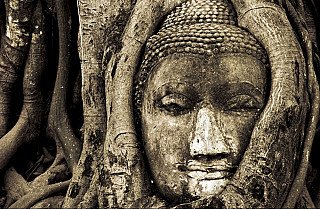Abhayagiri Buddhist Monastery

Visit our catalog for Buddha statues
Abhayagiri Buddhist Monastery is a Theravadin Buddhist monastery of the Thai Forest Tradition located in Redwood Valley, California. The temple has its regular duties and responsibilities which they prioritize accordingly. The chief works in the monastery seem to be the disseminating the teaching of Buddhist ethics. The dissemination is done through traditional concentration approach and insightful meditation techniques which are believed to be an effective way of dissolving stress.
Establishment of Abhayagiri Buddhist Monastery

The establishment of this monastery dated back to 1980 when Ajahn Sumedho was requested to teach Buddhism in California. He was the foremost western disciple of Ajahn Chah, the Thai Meditation Master. Regular visits by Ajahn Sumedho along with other senior monks and nuns lead to the formation of the Sanghapala Foundation in California. The foundation was formally set up in 1988 in 120 acres of land donated by the devotees of Chan Master Hsuan Hua. He was also the founder of the City of Ten Thousand Buddhas in Talmage. But in the present context, the area of land has been expanded to 280 acres.
After the establishment, the monastery had seen two abbots, Ajahn Pasanno and Ajahn Amaro. But in 2010 Ajahn Amaro was invited to serve as an abbot of Amaravati Buddhist Monastery in England. Hence thereafter, Ajahn Pasanno is the sole abbot of Abhayagiri Buddhist Monastery.
Under the leadership of Ajahn Pasanno, the monastery developed significantly. Initiatives like Bhikkhu Commons, the Pacific Hermitages were started. The hermitage was a branch of Abhyagiri Buddhist Monastery established in the Columbia River Gorge.
Likewise, the monastery also had a new building with new Reception Hall. The buildings will also include a spacious meditation hall, a larger and more modern kitchen, office, a library, guest rooms, a child care room, bathrooms and showers for laymen, laundry, a small shrine room housing Buddha statue, storage rooms, etc. This building is just a two-story tall.
Dissemination of Buddha's teaching by Abhayagiri Sangha

Abhayagiri Buddhist Monastery offers varieties of programs as according to the Buddhism. One of the programs created for the laypeople is Upasika Program. This program helps to assist individual practice, enhance spiritual training, and deepen both the intellectual and experiential understanding of Dhamma. The Upasika days are conducted throughout the year and the monastery intake both kinds of people- those who are committed formally for the day and others who simply wish to attend and get some information. For the course content of Upasika, there is a various theme for the teachings.
Apart from in-house training and teachings, Members of the Abhayagiri Sagha also travel to offer teachings in the immediate area and other parts of the country throughout the year. They offer teachings at Yoga Mendocino (Ukiah, California), at the Three Jewels Meditation Hall (Fort Bragg, California), and at Berkeley Buddhist Monastery monthly. At Portland, Friends of the Dhamma (Oregon), Spirit Rock Meditation Center, Insight Santa Cruz, and the Common Ground Meditation Center (Minneapolis, Minnesota), they offer the teachings at least once throughout the year.
Lifestyle at Abhayagiri Buddhist Monastery

Presently, Abhayagiri Buddhist Monastery consists of one abbot, eleven fully ordained bhikkhus (Buddhist monks), two samaneras (novices), and two anagarikas (postulants). Apart from this, guest teachers visit the monastery from the forests of Thailand, and England. Lay visitors, as well as Buddhists monastics, visits the monastery regularly for day visits. They are also allowed to stay as overnight guests. The monastery has separate space for male and female residents. Male residents live in small huts in the forest while female residents live in a house.
The monastery has kept the tradition alive with the daily schedule. They rise well before sunrise and then set for morning puja followed by silent meditation. At the evening Ajahn and other monastics monks will be available in the Dhamma Hall for questions and answers. The evening puja beginning with chanting sutras in Pali followed by the silent meditation. On Saturdays and lunar observance days during evening puja just after the period for silent meditation, the time is separated for formal Dhamma talks.
Note: FYI, we also manage huge collection of various period and regional Buddhist arts and Buddha heads are one of them. Please feel free to visit our online Buddha statues gallery to know more about the Buddha statues.
Share this page
























